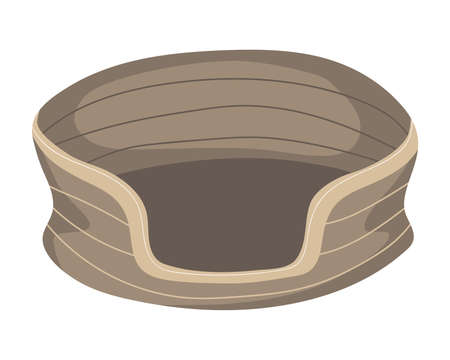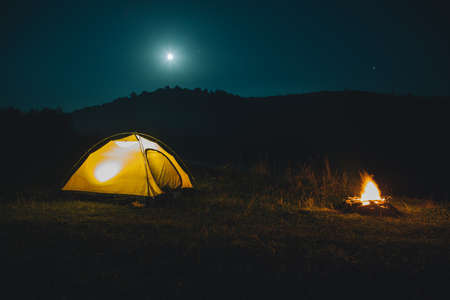Introduction: Embracing British Weather on the Campsite
If you’ve ever gone camping in the UK, you’ll know that wet and muddy conditions are practically a rite of passage. Thanks to our famously unpredictable weather—think sudden downpours, persistent drizzle, and the occasional thunderstorm—it’s not unusual to find yourself ankle-deep in mud before you’ve even pitched your tent. While this is all part of the great British outdoor experience, it does present some unique challenges, especially when it comes to setting up a camp kitchen.
Keeping your cooking area clean and dry isn’t just about comfort; it’s also crucial for safety. A slippery surface or muddy utensils can easily lead to accidents or food contamination. Plus, nobody fancies eating a sarnie that’s picked up half the field! In this article, we’ll explore practical strategies to help you keep your camp kitchen mud-proof, making sure your meals stay safe and enjoyable no matter how wild the weather gets.
2. Choosing the Right Gear for Rainy Days
If you’re planning to cook outdoors in the UK, where wet weather is often just around the corner, selecting the right kit is absolutely vital. The last thing you want is muddy pots and soggy sandwiches, so investing in waterproof and easy-to-clean equipment really pays off. Here’s how you can keep your camp kitchen mud-proof and dry, no matter what the British skies throw at you.
Waterproof and Easy-to-Clean Cooking Equipment
When it comes to cookware, opt for stainless steel or hard-anodised aluminium as these materials not only resist corrosion but are also a doddle to clean—even after a sticky full English breakfast! Non-stick coatings help prevent food from welding itself to pans, making washing up less of a chore when water supplies are limited. Avoid anything with fiddly nooks that trap dirt or moisture; simple designs work best on rainy days.
Smart Storage Solutions
Keeping your utensils and ingredients dry is half the battle won. Go for storage boxes with tight-sealing lids and stackable designs—these keep mud, rainwater, and inquisitive wildlife out. Consider using packing cubes or dry bags for cutlery and smaller items: they’re lightweight, waterproof, and keep everything organised even if your tent turns into a puddle overnight.
Quick Comparison: Wet Weather Kitchen Essentials
| Item | Recommended Material/Feature | Why It Works in the Wet |
|---|---|---|
| Pots & Pans | Stainless Steel / Hard-Anodised Aluminium / Non-stick Coating | Easy to clean, resists rust, dries quickly |
| Utensil Storage | Sealable Plastic Boxes / Dry Bags | Keeps mud and water out, easy to wipe down |
| Food Containers | BPA-free Locking Lids / Stackable Design | Prevents leaks and cross-contamination, space-saving |
| Cupboard Essentials Bag | PVC-Coated Fabric / Roll-Top Closure | Mud-proof, splash-resistant, portable |
The Value of British-Standard Kit
The unpredictable UK climate means not all camping gear is created equal. Investing in British-standard kit—recognised for its durability and weather-resistance—can make all the difference. Look for products marked with BS or EN certifications: these have been tested for British conditions and are built to handle rain, mud, and relentless drizzle. It might cost a bit more upfront but saves you hassle (and replacements) in the long run.

3. Setting Up: Strategic Kitchen Placement and Shelter
When the heavens open and the British drizzle turns to a proper downpour, where you set up your camp kitchen makes all the difference. First things first, always pick the highest, flattest bit of ground available – avoid dips and natural run-offs that quickly become boggy. If you’re in a field or woodland, look for a spot with good drainage and a slight incline so water runs away rather than pooling underfoot.
Using Tarps: The British Camper’s Best Friend
A sturdy tarp is an absolute must-have for wet UK weather. Rig it up before you even think about unpacking your cooking kit. Go for a ridgeline setup between two trees or use trekking poles if you’re on open ground. Angle the tarp so rainwater flows off one side, keeping your kitchen area underneath bone dry. Remember to peg out the corners taut—flapping tarps are noisy and let water sneak in.
Windbreaks: Battling Blustery Weather
The British wind can be just as troublesome as rain. Use natural features like hedges or bushes as windbreaks, or bring along a folding camp screen. Position these on the prevailing wind side to stop gusts blowing rain straight into your kitchen. Not only does this keep things drier, but it also makes cooking safer by protecting your stove’s flame.
Groundsheet Tips: No More Muddy Footprints
Lay down a robust groundsheet (or even better, two) beneath your kitchen setup. Choose one with high sides if possible – think of it as a paddling pool but for keeping mud out rather than water in! At the very least, give your groundsheet a quick shake every now and then to shed pooled water and debris. This small step goes a long way in keeping both your gear and feet mud-free, no matter how soggy it gets outside.
4. Prep Like a Pro: Keeping Ingredients and Surfaces Dry
When you’re cooking outdoors in the British wet, staying organised is half the battle against mud and moisture. Soggy sandwiches and muddy veg are no one’s idea of a cracking meal, so here are some practical hacks to keep your camp kitchen shipshape—even when the rain won’t let up.
Organise Ingredients with Wet-Weather Savvy
The key to keeping ingredients dry starts before you even leave home. Use airtight containers or heavy-duty zip bags for everything from bread rolls to chopped onions. Label each container clearly, so you aren’t digging about in the mud searching for what you need. For those classic British staples—think cheddar, crisps, or even a cheeky pork pie—a bit of extra protection goes a long way.
| Ingredient Type | Packing Solution | Top Tip |
|---|---|---|
| Bread & Pastries | Airtight plastic boxes | Add kitchen roll to absorb excess moisture |
| Chopped Veg | Zip-lock bags, double-bagged if needed | Keep separate by meal to avoid cross-contamination |
| Dairy & Cheese | Sealable tubs or wax wraps | Wrap tightly; store above ground level in your bag |
| Meats & Proteins | Vacuum-sealed packs or leak-proof containers | Pack at the bottom of cool box, away from tent entrance |
Prep Surfaces That Stand Up to British Mud
Plastic chopping boards are a must—they’re easy to wipe down and don’t soak up water like wooden ones. Always set up your prep station on a foldable table or on top of a waterproof picnic blanket. If it’s really boggy underfoot, lay down an old groundsheet first to keep things above the puddles.
Managing Utensils: No More Muddy Spoons!
Utensil chaos is a recipe for disaster when it’s damp out. Stash knives, spoons, and tongs in mesh hanging organisers or peg them onto a washing line strung inside your shelter. Not only does this keep them clean, but it also means you won’t have to fish for them in muddy grass.
Soggy Sandwiches? Not On Our Watch!
If you’re making sarnies ahead of time, wrap them individually in greaseproof paper before popping them into waterproof containers. Keep fillings like lettuce and tomato separate until serving—no one likes limp leaves! And always assemble under cover; even a brolly will do in a pinch if the heavens open mid-prep.
5. Cleaning Up in the Wet: Quick and Effective Routines
When British weather turns soggy and you’re ankle-deep in mud, cleaning up after a camp cook-up can feel like a losing battle. But with some clever routines, you can get your kit sparkling without sacrificing all your tea towels or spreading the mess further.
Step 1: Designate a “Dirty Zone”
Pick an area well away from your tent and cooking gear to do all your washing up. Lay down an old groundsheet or bin bag to keep things semi-dry and stop mud creeping onto your plates.
Step 2: Scrape First, Wash Second
Scrape off as much food debris as possible before you touch any water. Use a spatula or even a bit of bread – less gunk means less muddy water to deal with later.
Step 3: Smart Washing Up
Use two bowls: one for soapy wash, one for rinsing. Keep both raised on crates or rocks so you’re not dunking everything straight into the mud. Top tip: bring a small bottle of eco-friendly washing-up liquid – it works even in cold water.
Step 4: Shake and Air Dry
Give everything a good shake before drying to get rid of lingering droplets and grit. If it’s not chucking it down, string up a guy line under your tarp and hang utensils and cloths to air dry – saves you burning through precious tea towels.
Step 5: Stow Kit Sensibly
Pop clean kit straight into dry bags or Tupperware as soon as it’s dry-ish. If you’re out for several days, rotate cloths and keep one emergency towel stashed away for that final day pack-down.
Pro Tips for Minimising Mess
Bring a folding bucket or collapsible tub – easy to carry, keeps everything contained, and stops the site turning into a bog. And always have a stash of microfibre cloths; they dry quickly and mop up spills fast.
Nail these simple steps and you’ll keep your camp kitchen clean, your gear ready for action, and most importantly – you’ll never run out of dry tea towels when it’s time for that all-important cuppa.
6. Real-World Tips: British Campers’ Insider Advice
If there’s one thing British campers know well, it’s how to deal with mud, drizzle, and the kind of persistent damp that can turn any outdoor cooking into a right palaver. We’ve rounded up some top insider tips from seasoned UK campers who’ve cooked their bacon butties in every kind of soggy field imaginable.
Wellies: Your Best Friend
No self-respecting camper heads out without a sturdy pair of wellington boots. They’re not just for tramping about—many swear by keeping a “cooking pair” strictly for use around the camp kitchen, ensuring you’re not tracking even more muck into your tent or awning.
Bin Bags: The Unsung Hero
Heavy-duty bin bags are the secret weapon for many. Lay them down as a makeshift floor under your prep area or use them to cover gear during sudden showers. Some even cut them open to create larger waterproof sheets, perfect for wrapping around tables or stacking firewood off the wet ground.
Plastic Crates Over Fabric Bags
Forget canvas totes—plastic storage crates are far easier to wipe down and keep mud at bay. Stack your utensils and pantry items inside, then use the lid as an extra surface if things get really mucky. No more soggy bread or muddy tea towels!
Fold-Up Tables and Windbreaks
A foldable table is a real game-changer, raising your cooking kit above puddles and slop. Pair this with a windbreak (the kind used at British beaches) to shield your stove from gusts and keep ground splash off your food prep area.
Quick-Dry Microfibre Cloths
Ditch bulky towels for microfibre cloths—they dry fast and are brilliant for wiping down kit between uses. Keep a few handy for hands, surfaces, and even muddy boots before heading back into your sleeping area.
Leave-No-Trace Essentials
Bags for rubbish, biodegradable wipes, and a small washing-up bowl ensure you leave your pitch as pristine as you found it—even after battling through the boggiest conditions. As many British campers say: take only memories, leave only footprints (and hopefully no mud prints in the kitchen).

